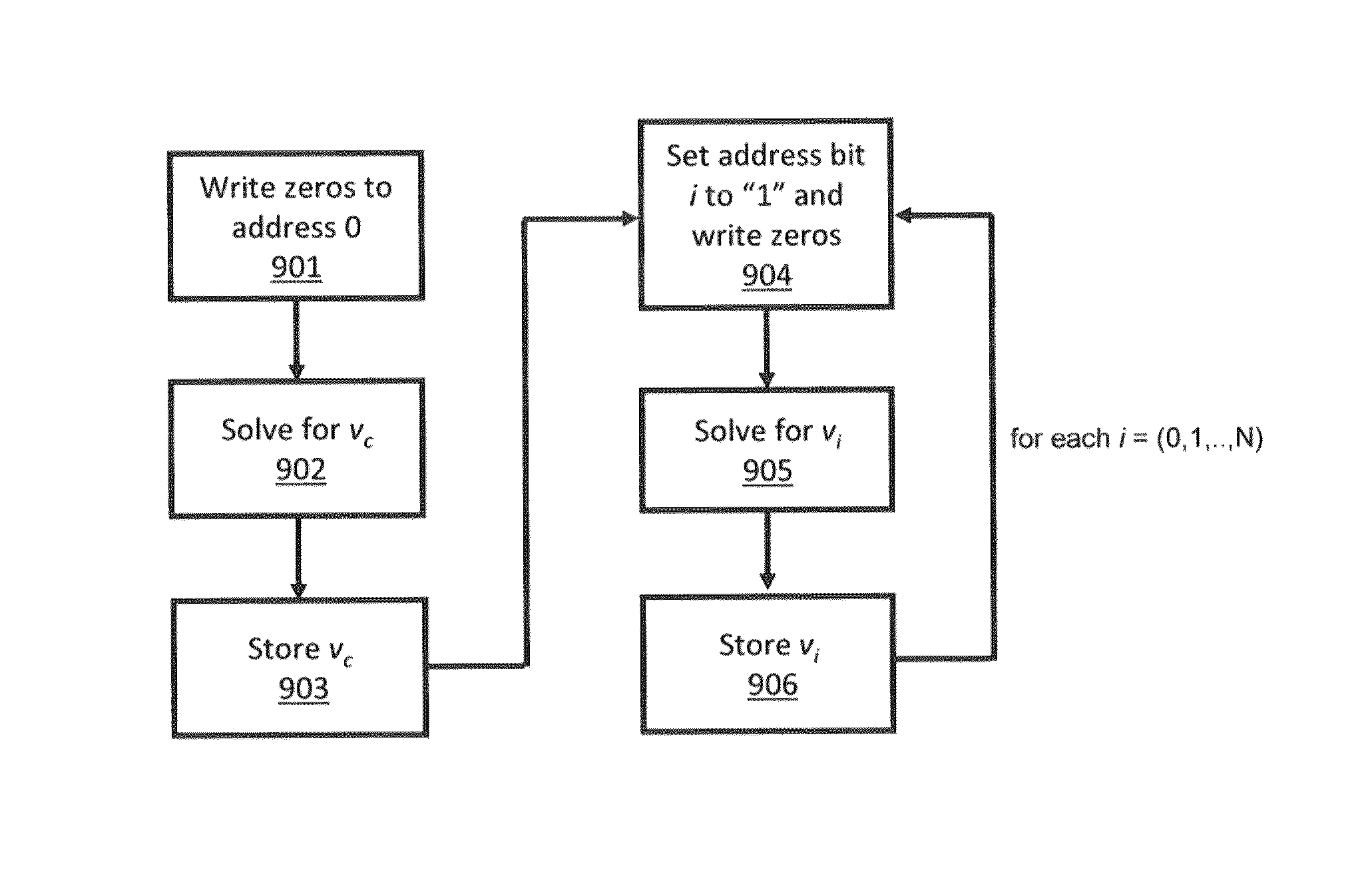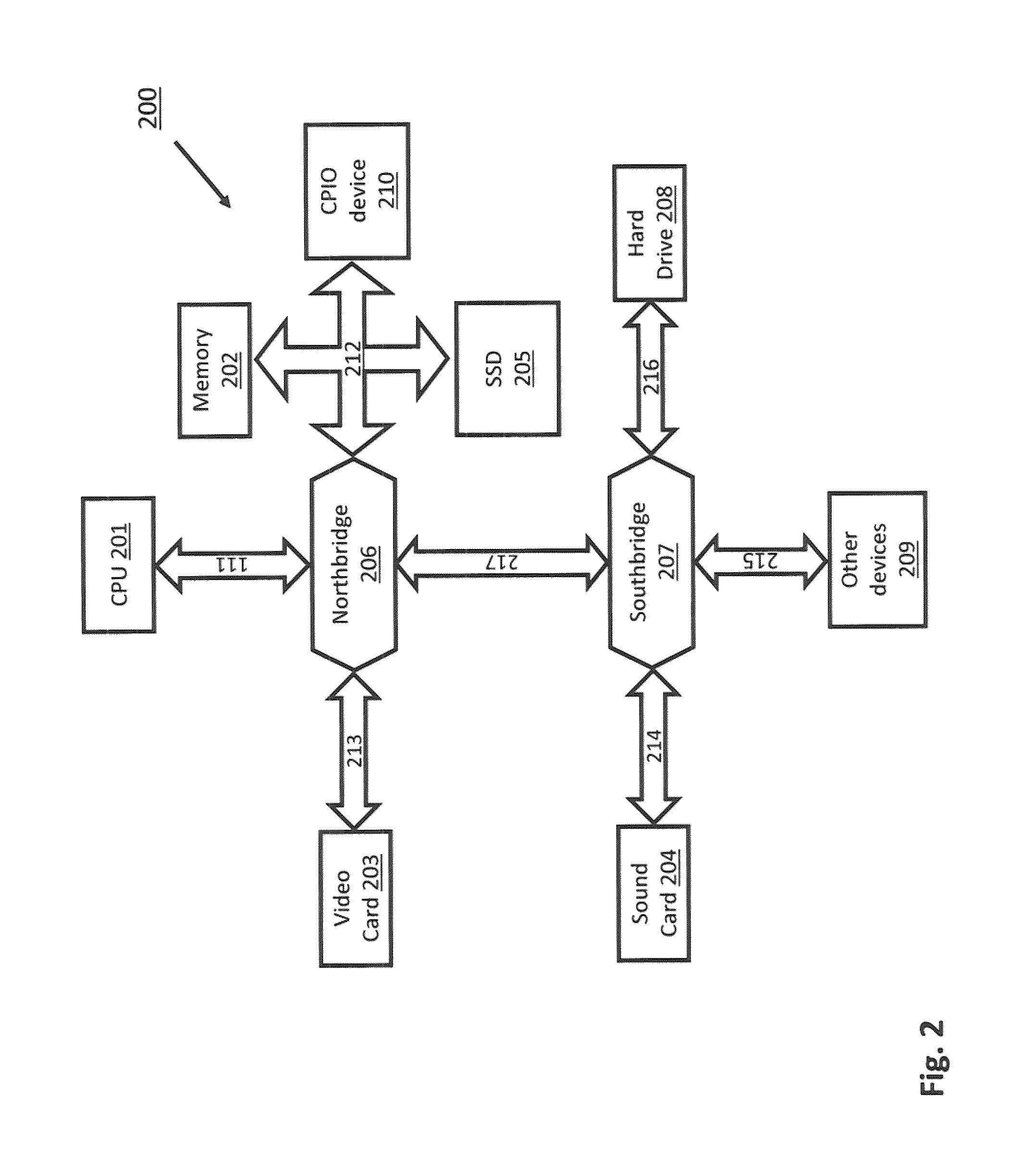System and method of interfacing co-processors and input/output devices via a main memory system
a main memory system and coprocessor technology, applied in the computer field, can solve the problems of preventing the use of maze sequence unlocking, i/o bottlenecks, and connecting via slower buses, and taking advantage of the significantly higher bandwidth of main memory buses
- Summary
- Abstract
- Description
- Claims
- Application Information
AI Technical Summary
Benefits of technology
Problems solved by technology
Method used
Image
Examples
Embodiment Construction
Prior Art
[0026]FIG. 1 illustrates a block diagram of a typical prior art computer architecture that connects co-processors or I / O (CPIO) devices via I / O buses. A computer system 100 typically includes a CPU (central processing unit) 101, a main memory unit 102 (e.g.—one or more DRAM (dynamic random access memory) modules), and CPIO devices including a video card 103, a sound card 104, a hard drive 108, and an SSD (solid state drive) 105. These components are connected together via buses on a motherboard (not shown). As illustrated, CPU 101, main memory unit 102, and video card 103 are connected via their respective buses, 111, 112 and 113, to a northbridge 106. A northbridge 106 is traditionally a chip in the chipset of the motherboard that connects high speed buses, including the FSB (front-side bus) 111, the main memory bus 112, and the PCI-E (peripheral component interconnect express) bus 113.
[0027]Slower buses, including the PCI bus 114, the USB (universal serial bus) 115, and t...
PUM
 Login to View More
Login to View More Abstract
Description
Claims
Application Information
 Login to View More
Login to View More - R&D
- Intellectual Property
- Life Sciences
- Materials
- Tech Scout
- Unparalleled Data Quality
- Higher Quality Content
- 60% Fewer Hallucinations
Browse by: Latest US Patents, China's latest patents, Technical Efficacy Thesaurus, Application Domain, Technology Topic, Popular Technical Reports.
© 2025 PatSnap. All rights reserved.Legal|Privacy policy|Modern Slavery Act Transparency Statement|Sitemap|About US| Contact US: help@patsnap.com



